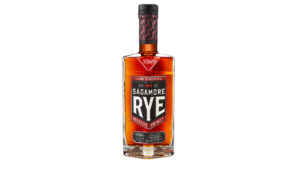
Pool/Getty Images
President Donald Trump’s most recent medical report shows that he is in relatively good health for a 78-year-old. His blood pressure and cholesterol levels are under control, which helps protect his heart. Aside from allergies and some skin conditions, his overall health may be partly due to avoiding alcohol and cigarettes.
Trump’s diet is another thing. He is known to enjoy fast food, which could be why he takes two medications to help lower his cholesterol. (Here’s everything you’ll find in Donald Trump’s daily diet.) His eating habits may also explain why his body mass index (BMI) is 28, placing him in the “overweight” category.
A routine colonoscopy in 2024 showed that Trump has diverticulosis, which is common in people older than 50. A diverticulum is an abnormal pouch that forms on the wall of your colon, and diverticulosis is the medical term for the presence of diverticula. People with diverticulosis may not be aware because it often doesn’t come with symptoms.
A diet that’s low in fiber and high in red meat may increase your risk of diverticulitis, which is when the diverticula become inflamed. According to a 2019 review in the European Journal of Nutrition, eating more fiber can lower your risk of diverticular disease, which includes diverticulitis and diverticulosis. Although we don’t quite know how much fiber Trump eats in a day, the study found that each 10 grams of fiber added to Trump’s diet can reduce the risk of diverticular disease by 26%.
Preventing diverticular disease

Maskot/Getty Images
Trump’s abdominal exam didn’t show anything abnormal, but people with diverticulosis may experience abdominal pain if they have bowel issues such as irritable bowel syndrome or frequent constipation. Diverticulosis can also cause blood in the stool if a hard bowel movement puts pressure on a diverticulum, potentially rupturing a blood vessel. However, if someone with diverticulosis develops sharp abdominal pain, fever, or nausea, they may have diverticulitis. This is typically a medical emergency that requires antibiotics and fasting from food and drink until the colon heals.
Fiber is essential for adding bulk and softness to stool. When a diet is low in fiber, stools become harder and can stretch the colon, putting pressure on weak spots. Over time, these weak spots can form diverticula. During a flare-up of diverticulitis, a low-fiber diet is often recommended until the inflammation subsides. Here are some foods to eat and avoid for a diverticulitis flare-up.
Trump and anyone with diverticulosis can reduce the risk of diverticulitis by eating more fruits, vegetables, whole grains, beans, and seeds. Other preventive steps include cutting back on red meat and sugary foods, drinking plenty of water, exercising regularly, and maintaining a healthy weight.
Other health benefits of fiber

Oscar Wong/Getty Images
Trump may want to add more fiber to his diet for other reasons. Some fiber sources, such as asparagus, onions, and oats, serve as prebiotics that feed the good bacteria in your gut. When your gut bacteria ferment fiber, they produce short-chain fatty acids (SCFAs) that reduce inflammation, influence metabolism, and support your immune system. This fermentation in your gut also lowers the pH in your colon to reduce harmful bacteria and toxic byproducts due to protein digestion. Most people need at least 25 grams of fiber every day, but the average American falls short of this recommendation. Try eating these 29 foods if you need more fiber.
Fiber can help lower your risk of chronic conditions. According to a 2013 review in Nutrients, adding more oats, barley, and psyllium can reduce your risk of heart disease by lowering your “bad” LDL cholesterol. Fiber also slows digestion to help reduce your risk of type 2 diabetes. You may also find that more fiber in your diet can make you feel more full at meals, which can help you manage your weight.
Credit: healthdigest.com










